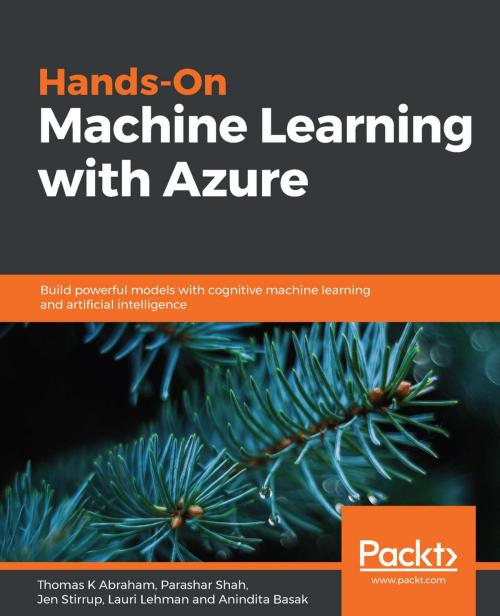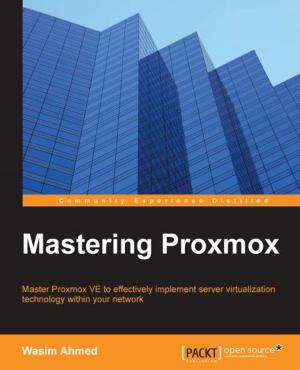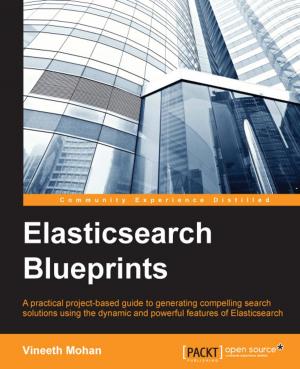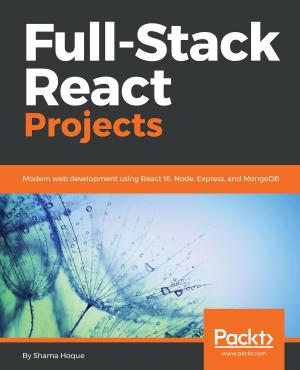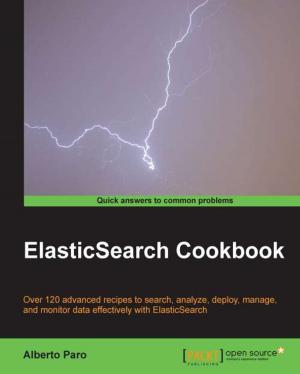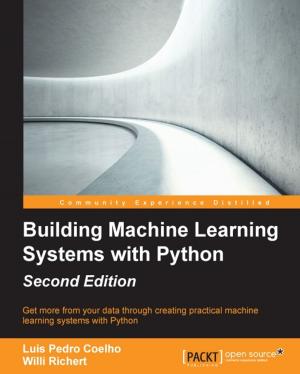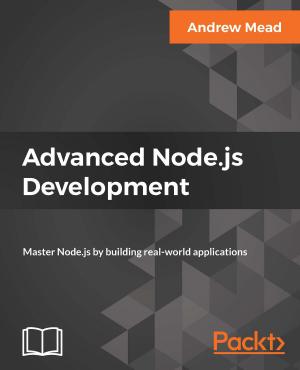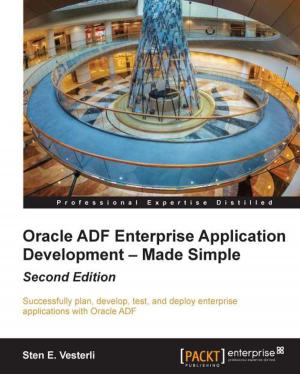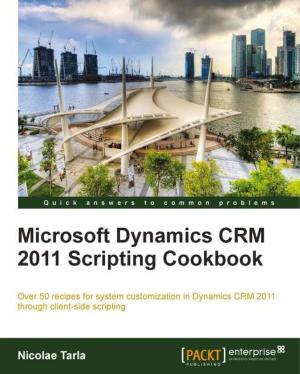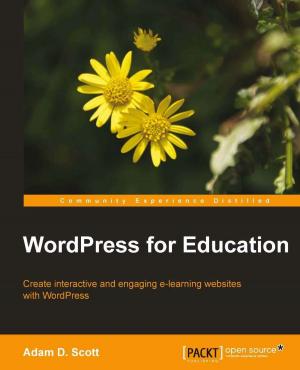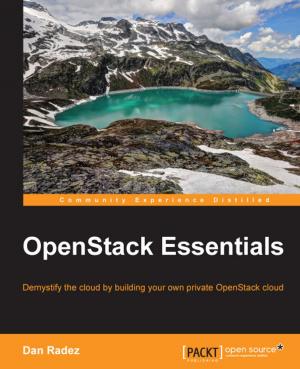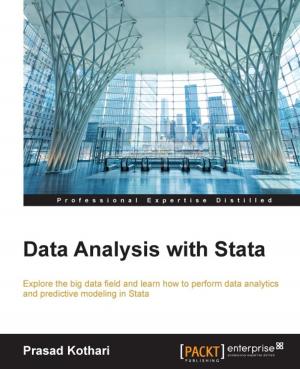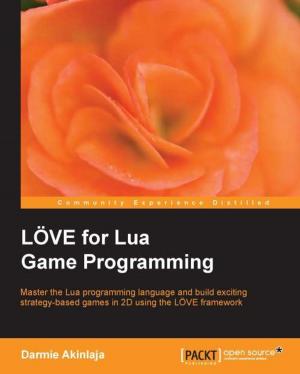Hands-On Machine Learning with Azure
Build powerful models with cognitive machine learning and artificial intelligence
Nonfiction, Computers, Advanced Computing, Natural Language Processing, Artificial Intelligence, General Computing| Author: | Parashar Shah, Thomas K Abraham, Jen Stirrup, Lauri Lehman, Anindita Basak | ISBN: | 9781789130270 |
| Publisher: | Packt Publishing | Publication: | October 31, 2018 |
| Imprint: | Packt Publishing | Language: | English |
| Author: | Parashar Shah, Thomas K Abraham, Jen Stirrup, Lauri Lehman, Anindita Basak |
| ISBN: | 9781789130270 |
| Publisher: | Packt Publishing |
| Publication: | October 31, 2018 |
| Imprint: | Packt Publishing |
| Language: | English |
Implement machine learning, cognitive services, and artificial intelligence solutions by leveraging Azure cloud technologies
Key Features
- Learn advanced concepts in Azure ML and the Cortana Intelligence Suite architecture
- Explore ML Server using SQL Server and HDInsight capabilities
- Implement various tools in Azure to build and deploy machine learning models
Book Description
Implementing Machine learning (ML) and Artificial Intelligence (AI) in the cloud had not been possible earlier due to the lack of processing power and storage. However, Azure has created ML and AI services that are easy to implement in the cloud. Hands-On Machine Learning with Azure teaches you how to perform advanced ML projects in the cloud in a cost-effective way.
The book begins by covering the benefits of ML and AI in the cloud. You will then explore Microsoft’s Team Data Science Process to establish a repeatable process for successful AI development and implementation. You will also gain an understanding of AI technologies available in Azure and the Cognitive Services APIs to integrate them into bot applications. This book lets you explore prebuilt templates with Azure Machine Learning Studio and build a model using canned algorithms that can be deployed as web services. The book then takes you through a preconfigured series of virtual machines in Azure targeted at AI development scenarios. You will get to grips with the ML Server and its capabilities in SQL and HDInsight. In the concluding chapters, you’ll integrate patterns with other non-AI services in Azure.
By the end of this book, you will be fully equipped to implement smart cognitive actions in your models.
What you will learn
- Discover the benefits of leveraging the cloud for ML and AI
- Use Cognitive Services APIs to build intelligent bots
- Build a model using canned algorithms from Microsoft and deploy it as a web service
- Deploy virtual machines in AI development scenarios
- Apply R, Python, SQL Server, and Spark in Azure
- Build and deploy deep learning solutions with CNTK, MMLSpark, and TensorFlow
- Implement model retraining in IoT, Streaming, and Blockchain solutions
- Explore best practices for integrating ML and AI functions with ADLA and logic apps
Who this book is for
If you are a data scientist or developer familiar with Azure ML and cognitive services and want to create smart models and make sense of data in the cloud, this book is for you. You’ll also find this book useful if you want to bring powerful machine learning services into your cloud applications. Some experience with data manipulation and processing, using languages like SQL, Python, and R, will aid in understanding the concepts covered in this book
Implement machine learning, cognitive services, and artificial intelligence solutions by leveraging Azure cloud technologies
Key Features
- Learn advanced concepts in Azure ML and the Cortana Intelligence Suite architecture
- Explore ML Server using SQL Server and HDInsight capabilities
- Implement various tools in Azure to build and deploy machine learning models
Book Description
Implementing Machine learning (ML) and Artificial Intelligence (AI) in the cloud had not been possible earlier due to the lack of processing power and storage. However, Azure has created ML and AI services that are easy to implement in the cloud. Hands-On Machine Learning with Azure teaches you how to perform advanced ML projects in the cloud in a cost-effective way.
The book begins by covering the benefits of ML and AI in the cloud. You will then explore Microsoft’s Team Data Science Process to establish a repeatable process for successful AI development and implementation. You will also gain an understanding of AI technologies available in Azure and the Cognitive Services APIs to integrate them into bot applications. This book lets you explore prebuilt templates with Azure Machine Learning Studio and build a model using canned algorithms that can be deployed as web services. The book then takes you through a preconfigured series of virtual machines in Azure targeted at AI development scenarios. You will get to grips with the ML Server and its capabilities in SQL and HDInsight. In the concluding chapters, you’ll integrate patterns with other non-AI services in Azure.
By the end of this book, you will be fully equipped to implement smart cognitive actions in your models.
What you will learn
- Discover the benefits of leveraging the cloud for ML and AI
- Use Cognitive Services APIs to build intelligent bots
- Build a model using canned algorithms from Microsoft and deploy it as a web service
- Deploy virtual machines in AI development scenarios
- Apply R, Python, SQL Server, and Spark in Azure
- Build and deploy deep learning solutions with CNTK, MMLSpark, and TensorFlow
- Implement model retraining in IoT, Streaming, and Blockchain solutions
- Explore best practices for integrating ML and AI functions with ADLA and logic apps
Who this book is for
If you are a data scientist or developer familiar with Azure ML and cognitive services and want to create smart models and make sense of data in the cloud, this book is for you. You’ll also find this book useful if you want to bring powerful machine learning services into your cloud applications. Some experience with data manipulation and processing, using languages like SQL, Python, and R, will aid in understanding the concepts covered in this book
